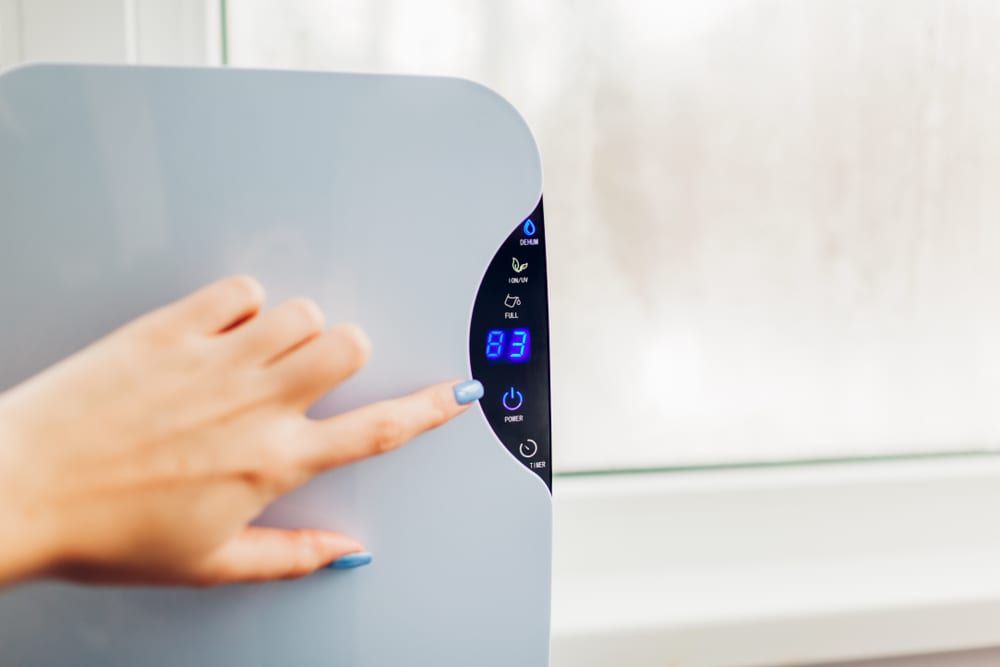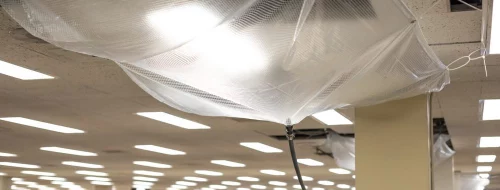A dehumidifier is a standard appliance found in homes that struggle with high humidity and moisture problems. A dehumidifier is designed to draw the excess moisture out of the air and into the machine itself, keeping the air around the home dry and free of mold and mildew.
Dehumidifiers are also used to help control issues like allergies, asthma, and other respiratory problems that can be present in a home due to high moisture levels.
While a dehumidifier typically requires minimal maintenance, it is important to maintain a few areas within the machine to keep it in the best working order. Following these ideas and guidelines will help your dehumidifier stay in working order. Keep your home’s moisture level comfortable and your family safe from mold and mildew!
How to Clean Your Dehumidifier
A dehumidifier is made up of several parts that will need to be cleaned regularly. Keeping these parts clean will ensure the machine will not have to work overtime, potentially running at a higher level than recommended due to dirt and build up.
- Water Collection Tank. The collection tank is where the excess water pulled from the air ends up. Not only does this reservoir need to be emptied frequently, it will need to be scrubbed regularly to stay clean and free of mold and mildew. A simple mixture of soap and hot water is perfect for the collection tank and will remove any trace of mold or mildew, keeping it out of the air in your home.
- Intake and Exhaust Grilles. These are the areas that circulate the air through the dehumidifier. Each season, these coils should be vacuumed lightly to remove any dust or debris. Keeping the intake and exhaust free and clear will make sure that no blockages make their way into the machine, keeping your appliance in like new condition.
How to Maintain Your Dehumidifier
If you correctly maintain your dehumidifier, it should last for several years! Just like regular cleanings are important, there are a few other areas to consider when using your dehumidifier to elongate the life of the appliance.
-
Placement of the dehumidifier.
Your dehumidifier should be at least 6 inches away from any wall on all sides. Intake and exhaust coils should not be blocked and should have unrestricted airflow.
-
Temperature of the room is also important.
Your dehumidifier should not be in a room lower than the recommended temperature of 65 degrees. It’s important the room is warm enough that the motor does not freeze or burn up from extreme temperatures. If the room is an exception to this rule, there are dehumidifiers specifically created for different temperatures.
-
Set your humidistat appropriately.
A humidistat controls the humidity level of a room. Ideally, a humidity level is between 40 and 50%. Most people are comfortable around this level of moisture in the air. A humidistat set to this level, your dehumidifier will maintain this percentage.
-
Go easy on the compressor.
Turning a dehumidifier on and off quickly can cause the machine to overheat. After turning the dehumidifier off, leave it off for at least 10 minutes to allow pressure to settle and equalize. After 10 minutes, it is safe to turn the appliance back on.
-
Replace the filter regularly.
The filter of a dehumidifier captures dust and allergens floating in the air. Filters keep the debris away from the insides of the machine and improve the overall air quality in the room. Your dehumidifier owner’s manual will go into more detail about replacing the filter and what types are needed.
If the moisture level in your home doesn’t seem to improve with the help of a dehumidifier, you run the risk of the growth of mold and mildew. McMahon Services are the professionals in mold remediation for the homes in Lake County, Illinois and will find the source of the mold before taking any other steps.
Call us today for more information about our mold removal services.








0 Comments